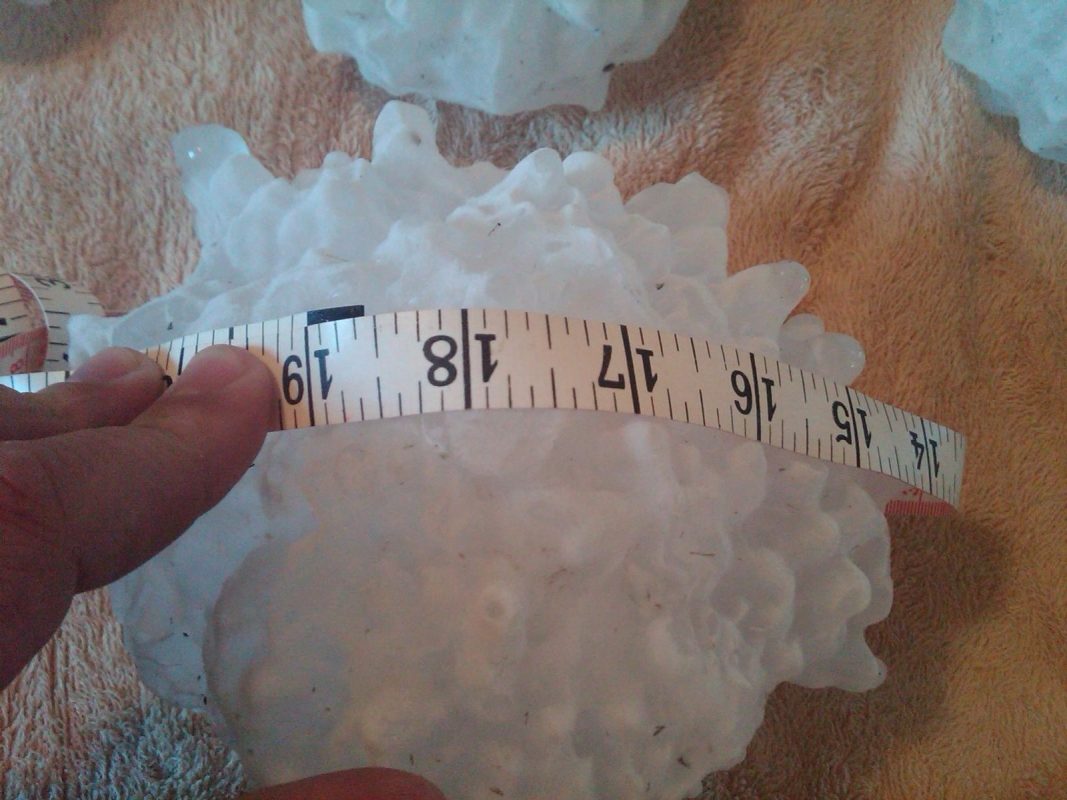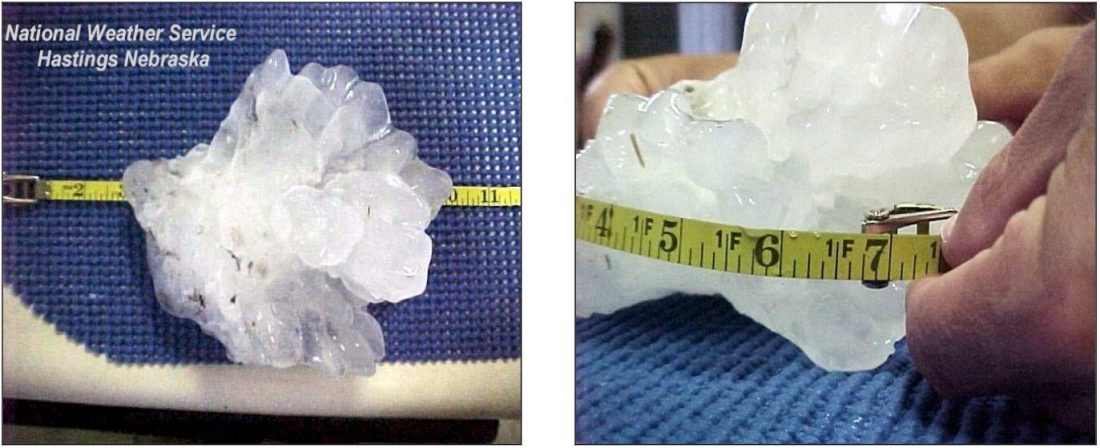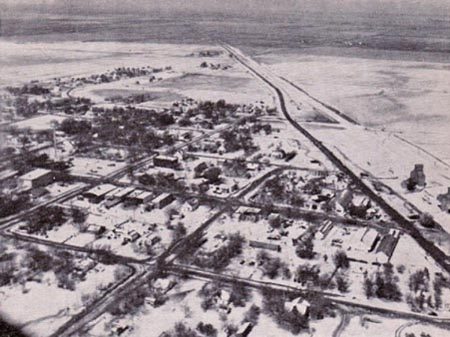
Hail is one of the biggest hazards with severe thunderstorms - while it is usually small, and relatively harmless, it may grow to tennis ball sized or even larger. It may cause severe damage, injuries and in extreme cases even death.
It forms as super cooled water droplets within a thunderstorm updraft begin freezing onto a condensation nucleus. The super cooled droplets are colder than 0 °C, but still in liquid state. As they come into contact with the growing hailstone they freeze onto it, making it grow. The growing hailstone is kept in the air by the storm's updraft until it grows too big and heavy for the upward wind to keep it aloft. The hailstone may make a single journey within the updraft, or it may make several journeys, each forming a new layer, producing a concentric onion-like structure.
Some hailstones form and grow by many smaller hailstones sticking and freezing together into a large hailstone - such form is called an agglomerate. The largest hailstones sometimes even form long icy horns or spines! The most severe hailstorms and largest hail is usually associated with supercell thunderstorms - it takes high to extreme instability, strong wind shear and dry mid levels for very large hail to form. But just how big and heavy? Read on.
LARGEST (DIAMETER) HAILSTONE EVER RECORDED: July 23, 2010 Vivian, South Dakota
A 20.3 cm (8.0 inch) hailstone was recorded in the intense hailstorm produced by the July 23, 2010 Vivian, South Dakota severe supercell. The hailstone was found by a Mr. Lee Scott and turned over to the U.S. National Weather Service for certification in Aberdeen, South Dakota. The hailstone had a circumference of 47.3 cm (18.625 inches) and a weight of 0.88 kg (1.9375 pounds)! It even produced an impact pit about 25 cm across on the ground.
There are other, unconfirmed instances of similarly sized hail reported in the past - Ponca City, Oklahoma is reported have been hit by up to 20-cm hail on April 17, 1935.
LARGEST (CIRCUMFERENCE) HAILSTONE EVER RECORDED: June 22, 2003 Aurora, Nebraska
A 47.6 cm (18.75 inches) circumference hailstone was recorded on June 22, 2003 on a severe thunderstorm that hit Aurora, Nebraska. The hailstone was 17.8 cm (7.0 inches) in diameter, but no weight was officially recorded as the hailstone partially broke off as it hit a roof of a house. It is very noteworthy, that the hail that hit Hamilton County (including Aurora) produced impact pits on the ground up to 36 cm across!

The heaviest hailstone that has been authenticated by authorities fell during an intense severe hailstorm in Gopalganj district of Bangladesh on April 14, 1986. It weighed in at 1.0 kg (2.25 pounds)! The intense hailstorm killed 92 people. In Europe the record is held by an large, 0.97 kg hailstone that fell in Strasbourg, France on August 11, 1958 - unfortunately no dimensions were recorded.
BIGGEST HAIL ACCUMULATION ON THE GROUND EVER RECORDED: June 3, 1959, Seldon, Kansas
A persistent, virtually stationary hailstorm hit Seldon, Kansas on June 3, 1959, producing a blanket of hail up to 45 cm thick over an area of 140 square kilometers.

The April 22, 1888, Moradabad & Beheri districts, India is the deadliest hailstorm in recorded modern history, with 246 fatailities.



Comment: More examples here: Baseball-sized hail: How severe hailstorms have caused devastation and killed people